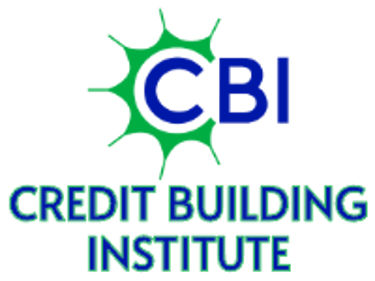CBI Blog
Emergency Credit Building: The Strategy That Could Save Your Financial Life
As we face a significant economic downturn in early 2025, access to credit will become challenging for many. This blog explores credit positioning—a strategy to boost your creditworthiness, attract lenders, and secure better financing conditions. Learn how to build and protect your credit to weather the financial storm ahead.
The Economic Storm Ahead
The first quarter of 2025 is expected to bring a significant economic downturn, with ripple effects projected to last at least 36 months. For millions of Americans, this economic storm will result in tightened credit markets, making it more difficult than ever to access loans or lines of credit. Individuals with no credit history, poor credit scores, or damaged credit histories will face the most severe challenges, experiencing what experts term "economic barring" from the financial system.
If you find yourself in this situation, there is good news: you can take proactive steps to build your credit and protect yourself from the worst financial setbacks with credit positioning, one of the most effective strategies for preparing for economic challenges.
Credit positioning is the proactive and strategic effort to enhance and effectively communicate an individual or business's creditworthiness in the financial marketplace.
By positioning their credit, individuals or companies can increase their attractiveness to lenders and secure more favorable financing conditions, such as lower interest rates, higher credit limits, and enhanced negotiation power.
This blog will explore why emergency credit building is essential and how it can safeguard your financial future.


The 2025 Economic Downturn: What You Need to Know
Economic experts warn that the upcoming downturn will lead to widespread financial instability. Here are some of the key factors driving this crisis:
Rising unemployment rates: Job losses often lead to late payments and damaged credit scores.
Restricted lending policies: Financial institutions become cautious, approving fewer credit applications.
Increased debt levels: Consumers struggling to make ends meet may overextend themselves financially.
People with no credit or poor credit histories can face serious problems. Without access to credit, they may have trouble paying for emergencies or taking advantage of opportunities when the economy improves.
The Personal Credit Crisis: A Hidden Danger
During economic downturns, banks often make it harder to get loans. They focus on lending to borrowers with good credit histories and high credit scores. As a result, many people may find themselves left out of the financial system. Here’s what this means:
No credit, no safety net: Securing a loan for emergencies is nearly impossible without a credit history.
Higher costs: Weak credit scores often result in higher interest rates, further straining finances.
Missed opportunities: When the economy recovers, those without strong credit will struggle to participate in growth opportunities, such as buying a home or starting a business.
The solution? Emergency credit building—a proactive strategy to position your credit for long-term stability and financial wellness.
What Is Emergency Credit Building?
Emergency credit building involves taking intentional and proactive steps to establish or improve your personal credit before a financial crisis occurs. By focusing on your credit positioning, you can protect your credit history, minimize setbacks, and prepare for opportunities that may arise during economic recovery.
Why Credit Positioning Matters
1. Credit score improvement: Establishing a strong credit history makes you more attractive to lenders.
2. Financial wellness: A strong credit profile allows you to manage emergencies and prepare for the future.
3. Resilience during downturns: Proactive credit management helps avoid common pitfalls like high-interest debt or credit denials.
The Steps to Build and Protect Your Credit in 2025
To prepare for the upcoming economic challenges, follow these steps to build and protect your credit:
Step 1: Assess Your Current Credit Status
Obtain your free credit report from AnnualCreditReport.com.
Review your credit score and identify areas for improvement.
Check for errors or inaccuracies in your credit report and dispute them immediately.
Step 2: Address Negative Marks
Pay off outstanding debts, starting with those in collections.
Negotiate payment plans with creditors to settle delinquent accounts.
Ensure all payments are made on time to prevent further damage to your credit score.
Step 3: Open and Maintain Secure Credit Accounts
Apply for a secured credit card or a credit builder loan to establish credit.
Use these accounts responsibly by keeping balances low and making timely payments.
Be cautious in applying for multiple lines of credit at once, as this can negatively impact your credit score.
Step 4: Develop Healthy Credit Habits
Keep your credit utilization below 30% of your total credit limit.
Set up automatic payments to ensure on-time bill payments.
Avoid closing old credit accounts, which contribute to your credit history length.
Step 5: Regularly Monitor and Adjust Your Strategy
Use credit monitoring tools to track changes to your credit score.
Continuously adjust your strategy based on your financial goals and progress.
Stay informed about changes in lending policies and economic conditions.
Why Timing Is Critical
It's essential to start building your credit right away. You might be in a tough spot if you wait until the economy struggles.
Here’s why it’s crucial to act now:
Immediate benefits: Improving your credit score increases your chances of securing credit during the downturn.
Long-term advantages: A strong credit history positions you to take advantage of lower interest rates and better terms when the economy recovers.
Peace of mind: Knowing you’re financially prepared reduces stress and allows you to focus on other priorities.
Real-Life Success Stories
Consider Sarah, a young professional who started with no credit history. She opened a secured credit card and consistently paid her balance in full, allowing her to build a credit score of 720 within two years. During the last recession, Sarah's strong credit enabled her to secure a personal loan at a low interest rate, providing her the financial flexibility to weather the storm.
Now, look at Mike, who had a damaged credit score due to medical debt. By addressing his delinquencies and utilizing a credit builder loan, Mike improved his score by 150 points in less than a year. When the economy recovered, he qualified for a mortgage and purchased his first home.
Tools and Resources for Emergency Credit Building
Credit monitoring apps: Tools like Credit Karma or Experian can help track your credit score and offer insights.
Secured credit cards: Look for cards with low fees and deposit requirements.
Credit builder loans: Credit unions and online lenders offer these loans specifically to help improve credit.
Financial wellness programs: Many organizations offer free resources to help consumers improve their credit and manage their finances.
Call to Action: Secure Your Financial Future Today
Now is the time to act! Don’t wait for tough economic times to start improving your personal credit. Taking steps today can help you avoid financial struggles in the future.
Look into programs to help you build your credit, talk to experts who can guide you, and start working toward a better financial situation. By improving your credit now, you'll be better prepared to face challenges and succeed when things get better.
Conclusion: Be Ready, Not Regretful
The 2025 economic downturn will challenge the financial stability of many people, but you can prepare for it. Building your credit is key to achieving financial health. You can confidently face future challenges by improving your credit score and taking steps now.
Start your credit-building journey today. Your future self will appreciate it.


